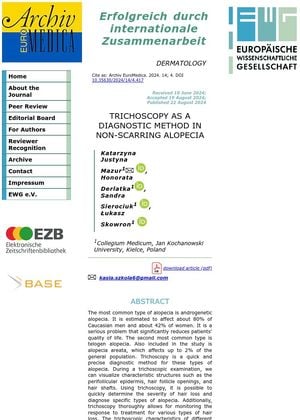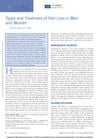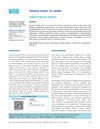Trichoscopy as a Diagnostic Method in Non-Scarring Alopecia
September 2024
in “
Archiv Euromedica
”

TLDR Trichoscopy is a quick, accurate, and non-invasive method to diagnose and treat non-scarring hair loss.
Trichoscopy is a valuable, non-invasive diagnostic tool for non-scarring alopecia, including androgenetic alopecia, telogen alopecia, and alopecia areata. It allows for detailed visualization of hair and scalp structures, enabling quick and precise diagnosis and monitoring. Compared to other methods, trichoscopy is faster, more accurate, and less invasive, making it essential for early treatment initiation. The study, based on a critical analysis of articles from 2012-2024, underscores trichoscopy's benefits and limitations, advocating for its use as a primary diagnostic method in clinical practice due to its diagnostic accuracy and efficiency.





